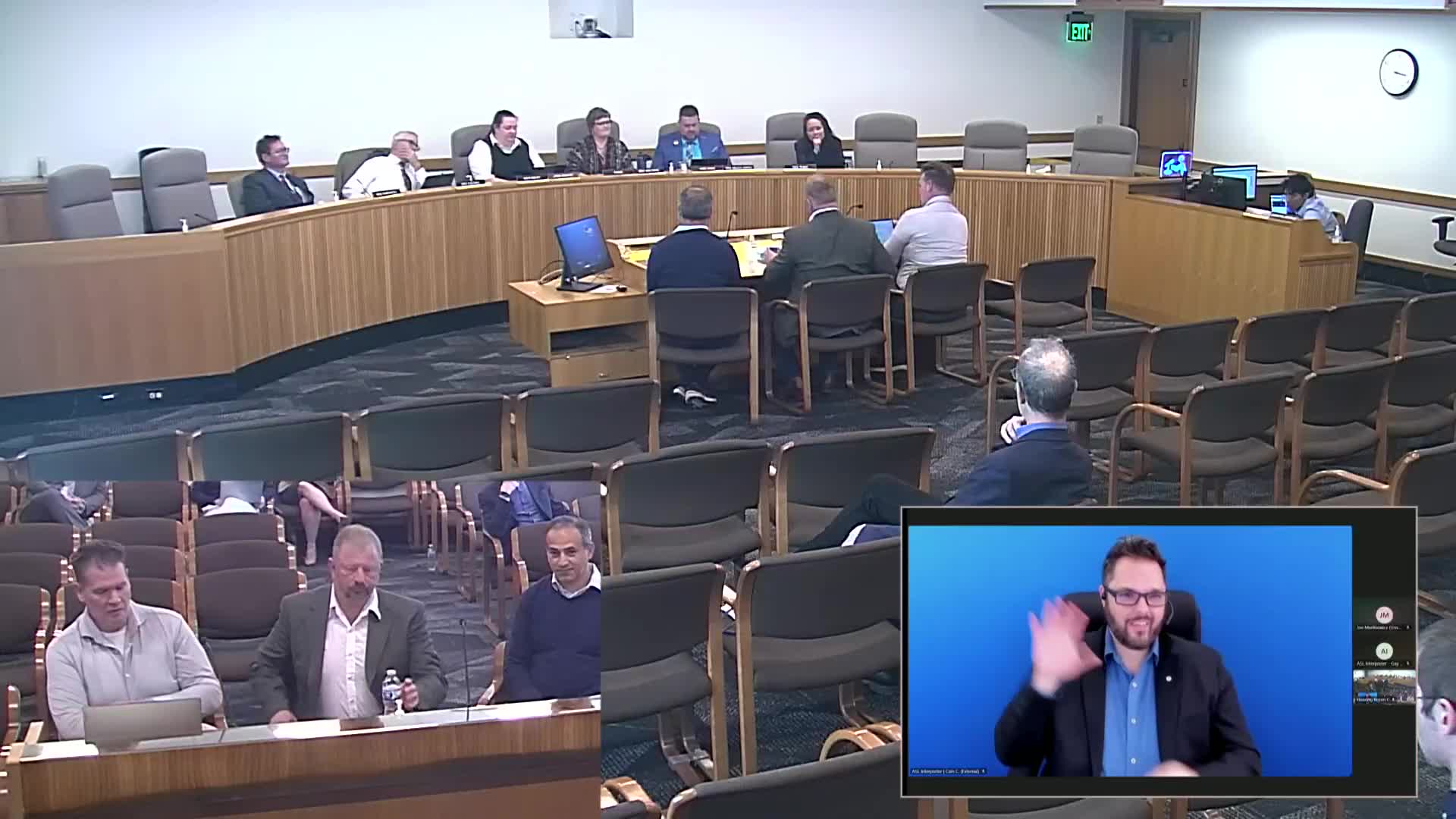Oregon researcher advocates for agrivoltaic systems to boost farm productivity and sustainability
April 28, 2025 | Energy and Environment, Senate, Committees, Legislative, Oregon
This article was created by AI summarizing key points discussed. AI makes mistakes, so for full details and context, please refer to the video of the full meeting. Please report any errors so we can fix them. Report an error »

Oregon's Senate Committee on Energy and Environment convened on April 28, 2025, to discuss the promising potential of agrivoltaic systems, which integrate energy production with agricultural practices. This innovative approach allows farmers to harness excess sunlight for energy while maintaining crop production, presenting a unique opportunity for sustainable farming.
The meeting highlighted the definition of agrivoltaics as a system where energy and agricultural production occur simultaneously on the same land. Experts emphasized the importance of managing critical farm resources—water, soil, and light—to enhance both financial and environmental sustainability. Research indicates that many crops in Oregon receive more sunlight than they can utilize, suggesting that agrivoltaic systems could convert this surplus into additional farm resources, leading to increased productivity and nutrient content in food, all while conserving water.
Despite the advantages, the implementation of agrivoltaics in Oregon faces significant hurdles. Currently, only 1,500 acres of agrivoltaic projects are proposed in the state, while over 98,000 acres are being developed elsewhere due to unclear legislative guidelines regarding their legality in Oregon. This lack of clarity could mean a loss of approximately $20 billion in potential investments for the state.
The committee discussed the need for legislative clarity to encourage the adoption of agrivoltaics. While other states like Massachusetts and New Jersey have already enacted supportive legislation, Oregon risks falling behind despite its historical leadership in this field. Experts called for immediate action to establish clear policies that would allow agrivoltaics to flourish, ensuring that Oregon remains at the forefront of this sustainable agricultural innovation.
As the meeting concluded, stakeholders expressed a commitment to advancing agrivoltaic systems in Oregon, recognizing their potential to provide more food, better food, and renewable energy while conserving vital resources. The next steps involve addressing the social and policy challenges that currently hinder the growth of this promising sector.
The meeting highlighted the definition of agrivoltaics as a system where energy and agricultural production occur simultaneously on the same land. Experts emphasized the importance of managing critical farm resources—water, soil, and light—to enhance both financial and environmental sustainability. Research indicates that many crops in Oregon receive more sunlight than they can utilize, suggesting that agrivoltaic systems could convert this surplus into additional farm resources, leading to increased productivity and nutrient content in food, all while conserving water.
Despite the advantages, the implementation of agrivoltaics in Oregon faces significant hurdles. Currently, only 1,500 acres of agrivoltaic projects are proposed in the state, while over 98,000 acres are being developed elsewhere due to unclear legislative guidelines regarding their legality in Oregon. This lack of clarity could mean a loss of approximately $20 billion in potential investments for the state.
The committee discussed the need for legislative clarity to encourage the adoption of agrivoltaics. While other states like Massachusetts and New Jersey have already enacted supportive legislation, Oregon risks falling behind despite its historical leadership in this field. Experts called for immediate action to establish clear policies that would allow agrivoltaics to flourish, ensuring that Oregon remains at the forefront of this sustainable agricultural innovation.
As the meeting concluded, stakeholders expressed a commitment to advancing agrivoltaic systems in Oregon, recognizing their potential to provide more food, better food, and renewable energy while conserving vital resources. The next steps involve addressing the social and policy challenges that currently hinder the growth of this promising sector.
View full meeting
This article is based on a recent meeting—watch the full video and explore the complete transcript for deeper insights into the discussion.
View full meeting
